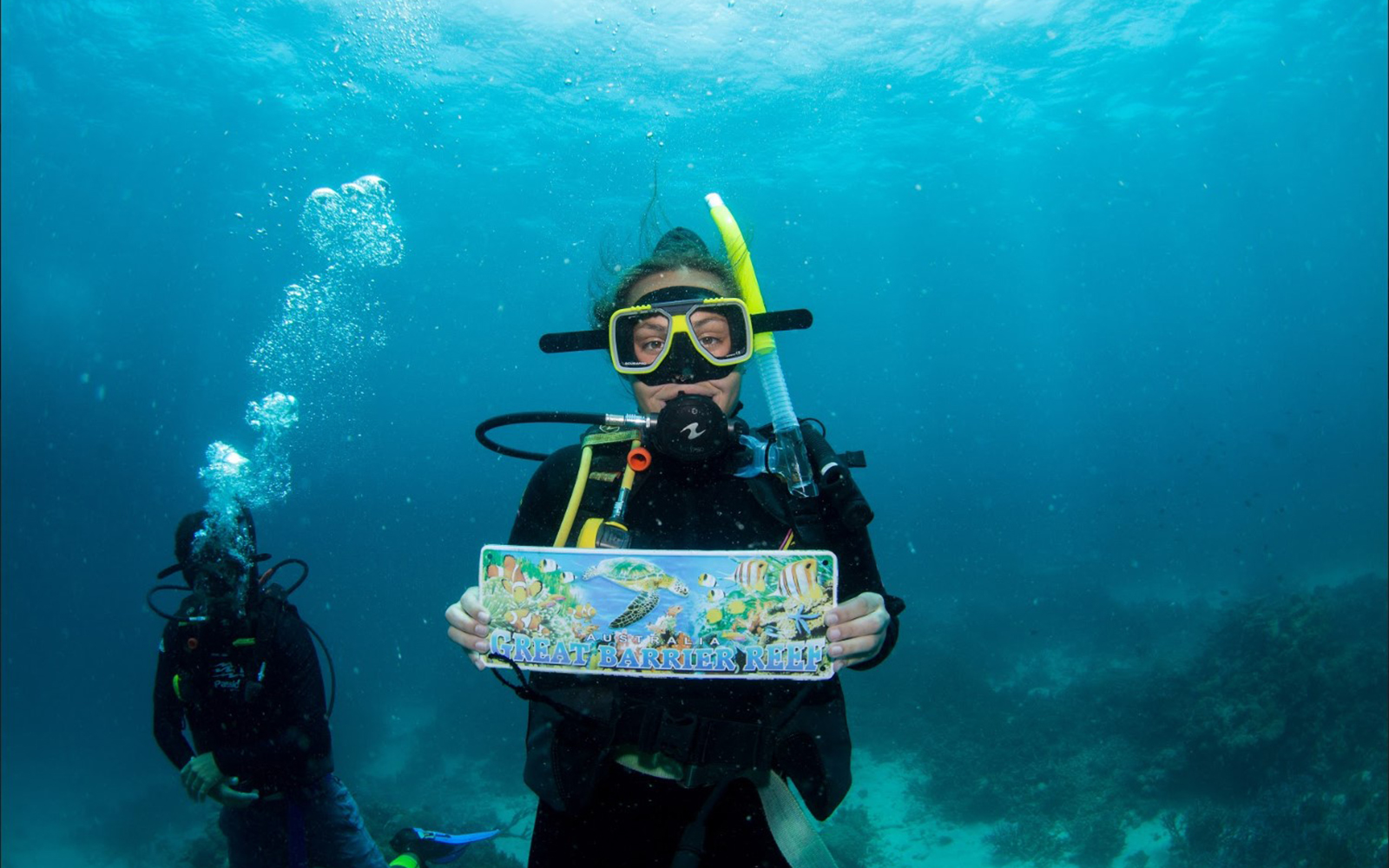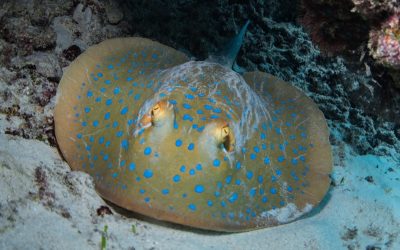
After returning home from adventuring in New Zealand, I quickly did a load of laundry and was back on a plane the following day, headed towards Brisbane, Australia. Next on my itinerary was touring the state of Queensland with a small group of 12 other UNSW exchange students. Along this nine-day tour we traveled from the bottom to the top of Queensland, visiting many breathtaking locations. These destinations included sand boarding down the multi-colored sands of Rainbow Beach, swimming in Lake McKenzie on Frazer Island, standing on the pure silica sand on Whitehaven Beach, and holding a koala on Magnetic Island. However, the most memorable location was saved for the last day of the trip. On the last day of the trip we sailed 2 hours on a large catamaran boat to the infamous Great Barrier Reef. At the reef I was fortunate to have the opportunity to scuba dive at two different reef locations. Scuba diving at the Great Barrier Reef was a bucket item I only dreamed of completing. Even though I had not completed my scuba certification, the scuba company lead me on a fully guided scuba dive to view the rainbow marine life and spectacular coral. Scuba diving was intimidating at first, relying solely on an oxygen tank to pump air into your lungs, however once the nerves settled and I established a breathing pattern, I was hardly focused on being 30 feet under the surface of the water and instead focused on the immense beauty surrounding me.

While diving I saw a whole range of aquatic animals. My favorite being the Bluespotted Stingray. The stingray had vibrant blue polka dots all over its body, making the stingray both stunning to look at, but also reminding us that the vibrant blue signals to stay away from the stingray or risk getting stung with a barbed venomous tail. A mixture of fear and amazement ran through me as we watched the stingray swim past us.
Other beautiful marine life I encountered while swimming in the reef was the Blackspotted Puffer, the Parrot fish, and Clown Anemonefish (Nemo!). The vibrancy in the fish was utterly shocking and it was hard to take in the full beauty of the reef and all its inhabitants. However, while scuba diving and snorkeling it was hard not to wonder why the coral reef seem muted in color compared to the vibrant colors seen in images taken of the Great Barrier Reef. Thoughts ran through my head including “is the reef dying?” or “is the coral bleached?” However, in a presentation from a marine biologist on the catamaran, she reminded the viewers that the water absorbs light and therefore makes it harder for colors with low energy wavelengths to be viewed in deeper depths. Another interesting point she voiced was a coral’s natural tendency to bleach. It is very common during the life span of a coral reef to bleach. Bleaching is when the reef enters a state of hibernation due to a spike in water temperature and the reef can maintain being bleached for a short period of time until the temperature of the water stabilizes back to a temperature it can live in again. She noted that the media often dramatizes coral bleaching as “the Great Barrier Reef dying”. Small amounts of bleaching is normal, however concern does arise if the water temperature rises and fails to return back to the stabilized temperature needed for coral reefs to live.
Overall the Great Barrier Reef truly embodies its title as a UNESCO World Heritage Site. Being over double the length of California and home to over 1,500 species of fish, the Great Barrier Reef is a natural wonder and I am very fortunate to have visited such a remarkable site.

Victoria Myers
Student, UConn School of Business
Hello UConn! My name is Victoria Myers and I am a junior accounting major with a minor in economics. In my free time, I play on UConn’s club field hockey team, volunteer for Big Brothers Big Sisters, and I am also a member of the UConn Consulting Group. A fun fact about myself is that I was born on Halloween; however, ironically, I am terrified of horror movies and the scary aspects of Halloween. View Posts